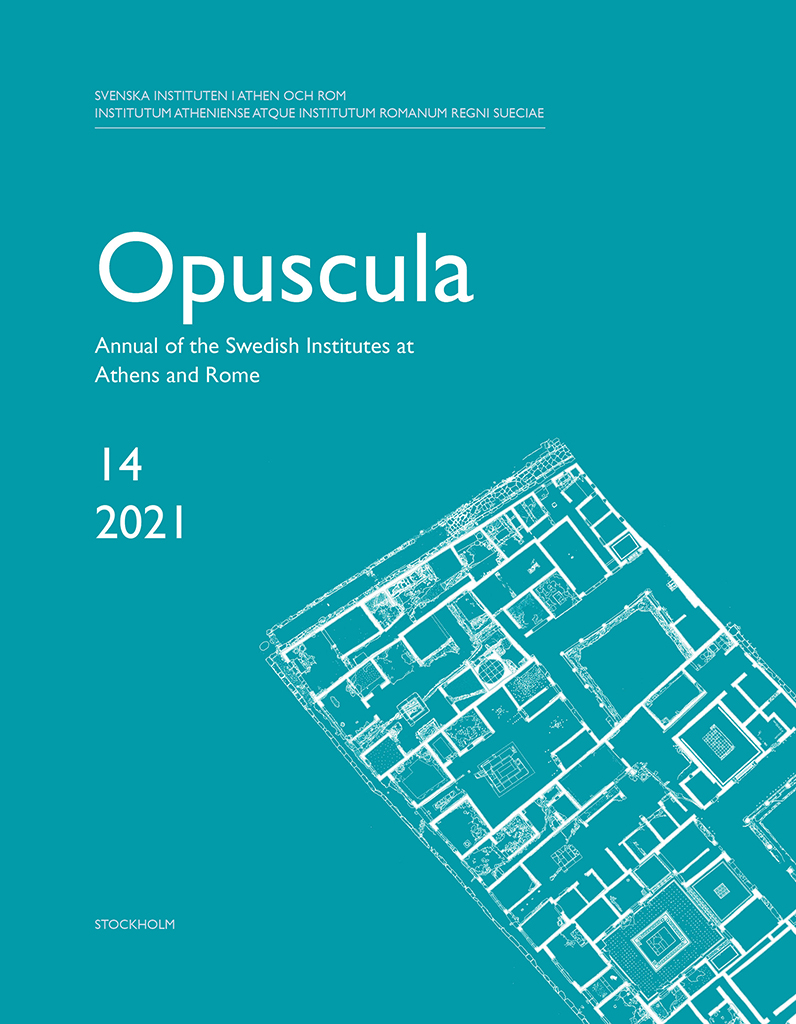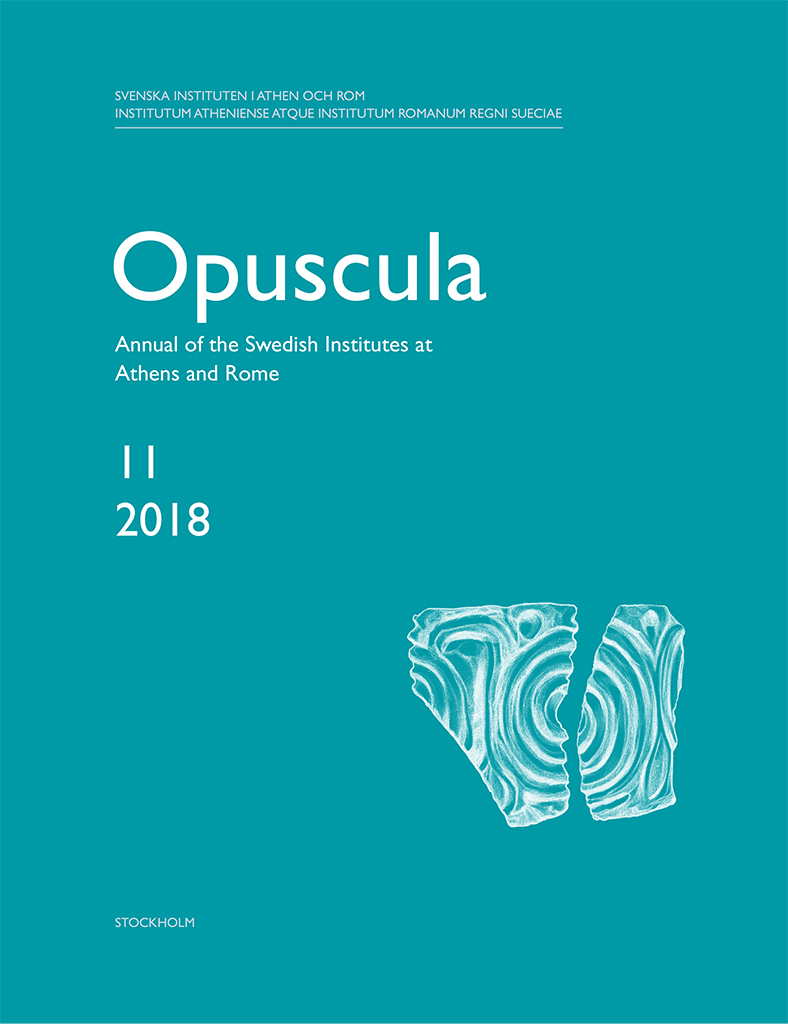Opuscula is published by the Swedish Institutes at Athens and Rome, with the aid of a grant from the Swedish Research Council. Distributed by Eddy.se AB. View journal at ERIH PLUS. All content available with open access. The Temple of Zeus at Lebadea. The architecture and the semantics of a colossus By Chrysanthos Kanellopoulos (National and Kapodistrian University of Athens, Greece) & Elena Partida (Hellenic Ministry of Culture & Sports, Greece) Abstract The Temple of Zeus Basileus at Lebadea rests almost unknown. Its physical remains and date (not systematically explored so far) pose a riddle, as regards not only the circumstances which entailed its presumed incompletion but also the historic context in which the commencement of construction can be embedded. The dimensions of the krepis alone render this edifice highly interesting in the history of temple-building. The in situ preserved architectural elements suggest that here was begun the erection of what was at the time the largest peristasis in Mainland Greece. The temple stylobate measures 200 feet/podes in length, with a lower column diameter equal to just over two metres, and the longest interaxial spacings and corresponding architraves of its time. By increasing the length and height of the structure,…
Opuscula is published by the Swedish Institutes at Athens and Rome, with the aid of a grant from the Swedish Research Council. Distributed by Eddy.se AB. View journal at ERIH PLUS. All content available with open access. Cella alignment and 4th century BC Doric peripteral temple architecture in Mainland Greece By Chrysanthos Kanellopoulos (University of Athens) & Manolis Petrakis (University of Athens). Abstract This article examines 4th-century BC Doric architecture, dealing with the cella position in relation to the design of the peristasis. Divergences from the theoretical principles are recorded and the reasons dictating the aesthetics as well the traditions are examined. A categorization of Doric peripteral temples is put forward and five peripteral temples are discussed in detail, with new drawings offered; the temple on the Leprean acropolis, the Temple of Asclepios at Gortyn, the Temple of Apollo Ismenios at Thebes, the Temple of Apollo at Mount Ptoion, and the so-called Temple of Hippolytos at Troizen. It is inferred that the previously reconstructed Ionic axial cohesion in the temples under examination has taken into account neither the principles of the Doric order, nor the correct sizes of the elements. An argued evaluation of the physical evidence is necessary for…


